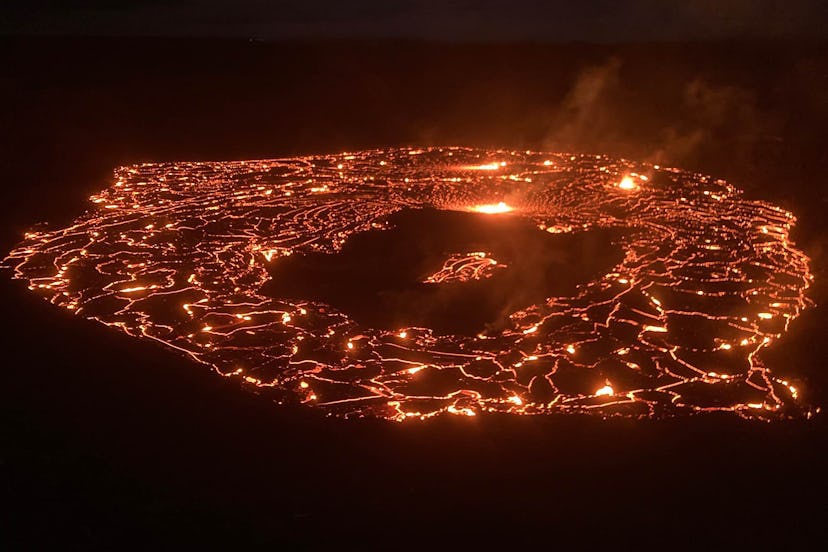Kilauea, One Of The World’s Most Active Volcanos, Is Erupting Again
On Jan. 5, the Hawaiian Volcano Observatory and the United States Geological Survey issued a notice that the volcano was active again. Here's what you need to know.

In September 2021, Hawaii’s Kilauea volcano began erupting, and it didn’t stop for more than a year. In December 2022, the volcano appeared to go dormant again as neighbor volcano Mauna Loa began to erupt in 2022 for the first time in 40 years, but that pause was short-lived. The volcano has begun to erupt again.
On Jan. 5, 2023, the Hawaiian Volcano Observatory and the United States Geological Survey issued a notice that the Kilauea volcano was active again. “The summit eruption of Kīlauea that began within Halemaʻumaʻu crater just after 4:30 p.m. HST today, January 5, 2023, continues at this time,” the notice reads. “All activity is confined to Kīlauea summit region, within Hawai‘i Volcanoes National Park.”
Although officials elevated the volcano alert level for Kilauea to a warning status and updated the aviation code from orange to red, it poses no hazard to people living in the area now.
“Lava fountains at Kilauea have reached as high as 150-plus feet in the air, but lava is still contained within the crater in a closed area of Hawaii Volcanoes National Park,” Hawaii Emergency Management Agency shared on social media. “No threat to communities.”
How To Track Hawaii’s Kilauea Eruption
Several webcams are set up in different areas of Kilauea, showing the current conditions of the volcano. The agency has 14 cameras set up, all available 24 hours a day, 7 days a week.
Since the eruption is on the summit, looking at those webcams — all available on a single webpage — is the best bet to track the volcano’s eruption.
Per Hawaii News Now, visitors and residents are “flocking” the park to view the “phenomenal” eruption.
What To Know About Kilauea The Volcano
In 2018, Kilauea’s eruption changed the island of Hawaii forever. According to Hawaii Volcanoes National Park, the eruption destroyed more than 700 homes and ruined residential areas in the Puna District.
“At the same time, the summit area of the park was dramatically changed by tens of thousands of earthquakes, towering ash plumes, and a massive collapse of Kīlauea caldera,” the national park explains.
“As a result of the activity from the 2018 eruption, Halemaʻumaʻu crater grew from 280 feet (85m) deep to about 1,600 feet (488m) deep, and the diameter more than doubled.”
The current eruption of Kilauea is not a threat to people and communities nearby, but authorities will continue to monitor the eruption.